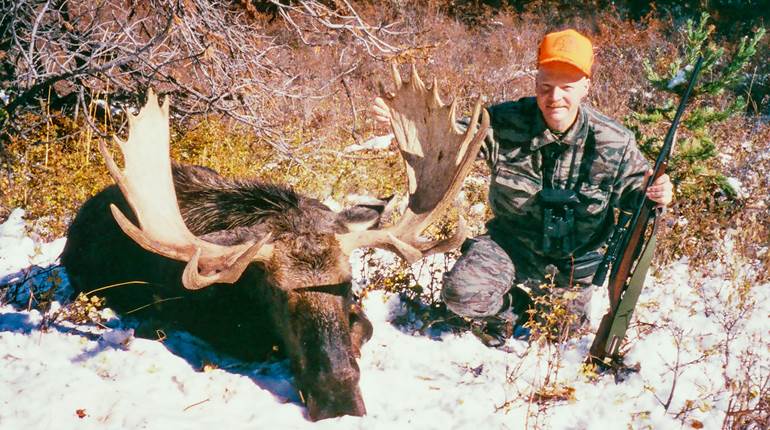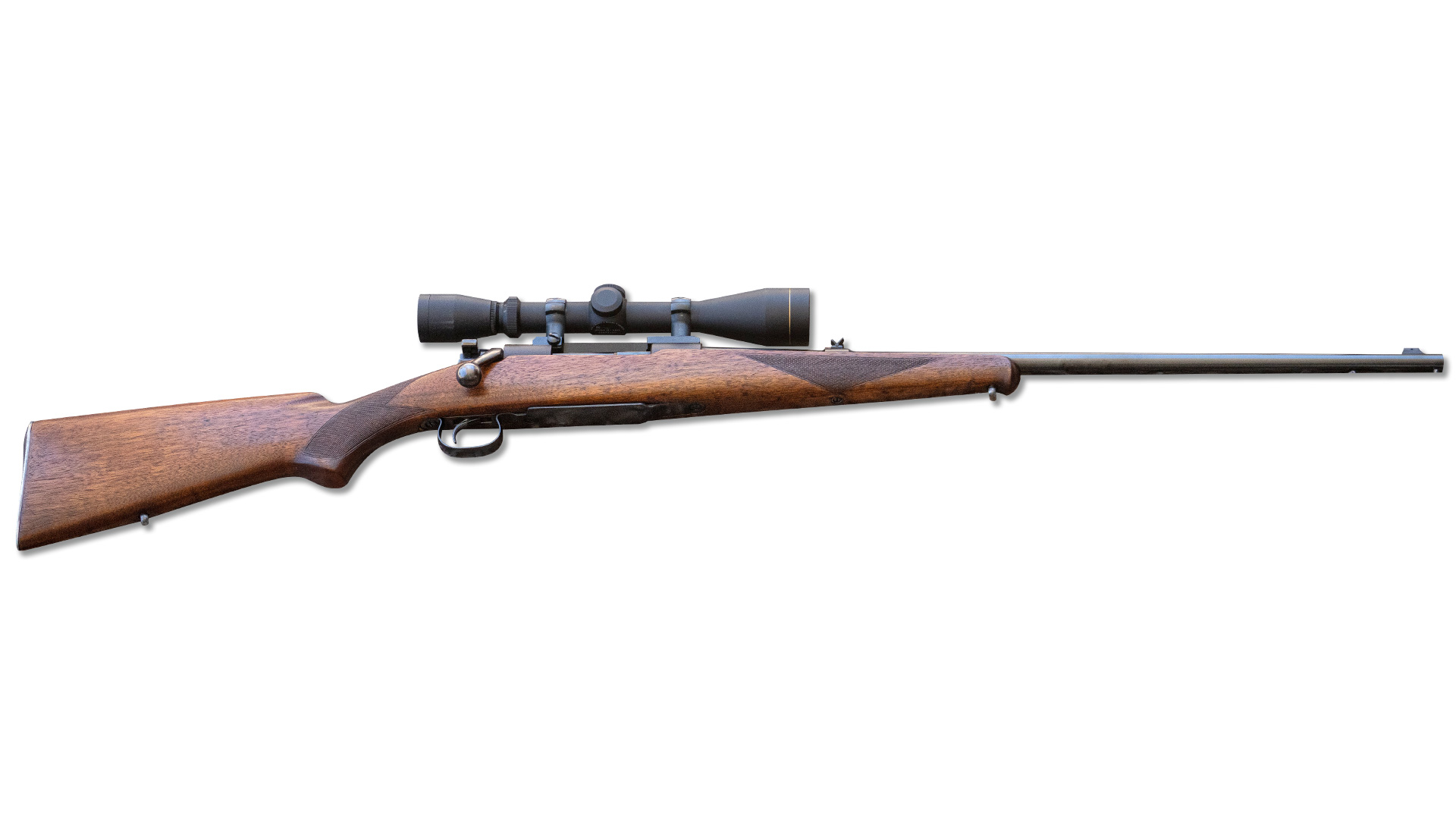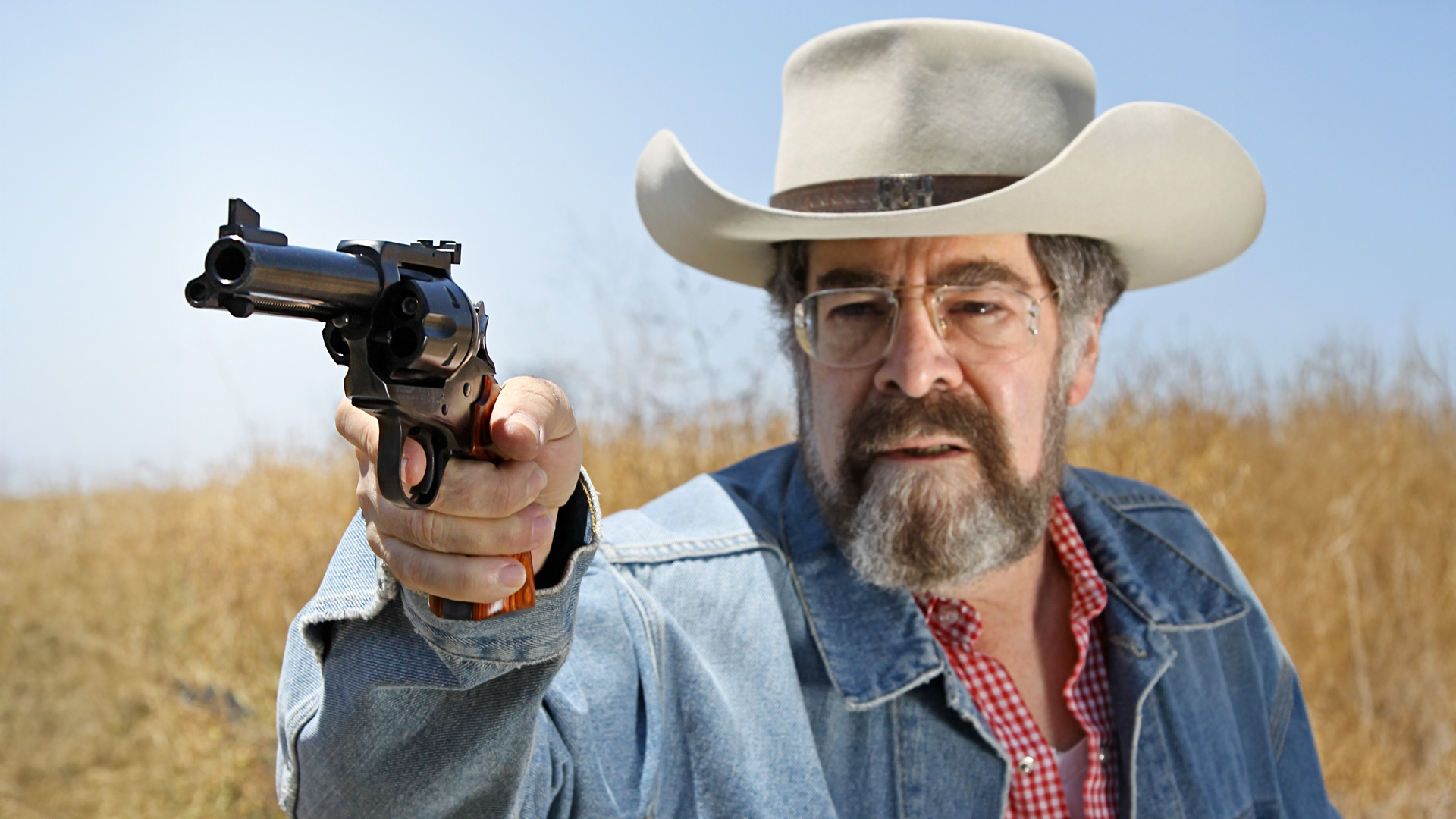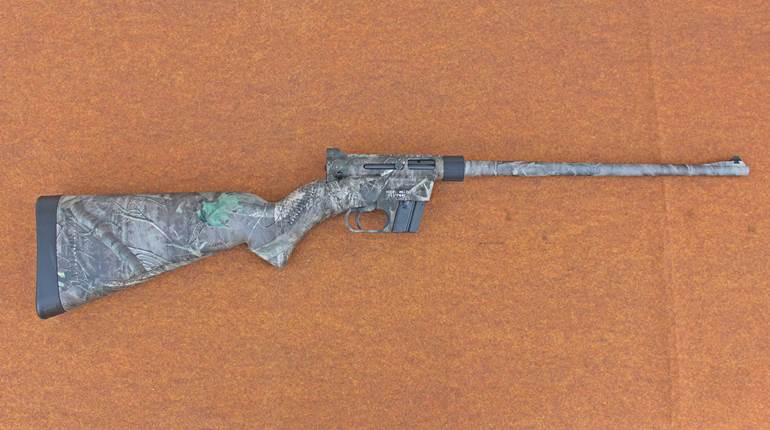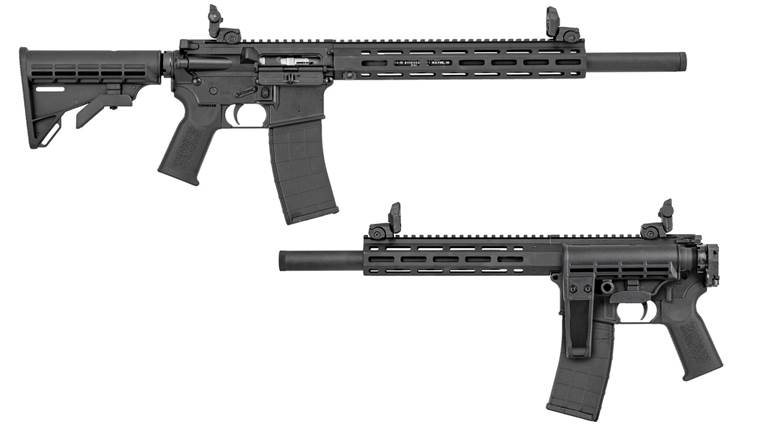
It is said—often—that we “don’t feel recoil in the field.” Yeah, well, adrenaline may dampen it a bit, but I’ve never again uttered that phrase since one fine evening in the Zambezi Valley. Light was fading as we closed on a group of elephants, and my buddy missed the brain shot. Hey, easy to do in good light, let alone with open sights at dusk. I was carrying his double .600 Nitro Express, and of course I was itching to use it, so I thought, “Good deal!” as I stepped forward to take the going-away hip shot.
Both barrels went off simultaneously, and that’s all I remember for a while. I sort of came to my senses next to the elephant, which had been flattened by the double impact (1,800 grs., 15,200 ft.-lbs.). That was five years ago. My left shoulder (I’m left-handed) has never been the same, so I suppose by now it never will be. Uh, I felt that recoil!
So Recoil Can Actually Hurt You?
Yeah, well, if you’re foolish enough to shoot a rifle of that magnitude it actually can, especially if you don’t hold it right, and almost always if you get a double discharge. You hear stories about people getting their collarbones broken by recoil. It can happen, and if you have a brain malfunction and shoot something stout while leaning back against a tree anything can happen. To a great degree it’s about the shooting position, not the actual foot-pounds of recoil.
Some years back, while stalking game with my wife, Donna, we had an unexpected opportunity to take a wildebeest. She took my rifle, then sat down and rested against one leg of the shooting sticks, an odd position. The rifle was a .375 Ruger-chambered Hawkeye, which kicks but is not unduly harsh. Somehow when she fired she lost her grip and the rifle sort of skidded along her shoulder. She got the wildebeest, but the next day she was every color of the rainbow from sternum to wrist—the worst bruising I’ve ever seen from recoil.
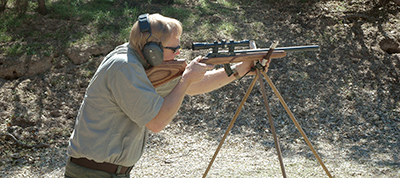
Usually, though, the worst physical damage will be mild bruising and maybe a scope cut. We’re going to work on the former. For the latter, just make sure you have plenty of eye relief on your scope. Again, position matters. The less your body can “give” with recoil, the more the gun is going to smack you. Prone is especially nasty for recoil because your body has nowhere to go. Also, it tends to place your forehead in a more forward-angled position, so scope cuts are more likely.
The worst scope cut I ever got was shooting prone at a mule deer with a .30-’06 Sprg., cross-canyon on a flat rock. I freely admit that I’m an unrepentant stock-crawler, however, so I have permanent scope scars between my eyes. For most of us, adequate eye relief is the only answer. The more recoil you must deal with, the more eye relief you need, but a full 4" should do under most conditions. About 10 years ago I was hunting in Cameroon with a .375 Wby. Mag., and I was just a wee bit shy on eye relief: The darned thing hit me between the eyes every time I squeezed the trigger. Not being totally impervious to pain, and fearful of the sight of blood (especially my own), I had noticed this on the range at home, but I thought I could stay away from it in the field—I couldn’t. Toward the end of the hunt I finally caved in, took off the scope and used the iron sights. That is the only time in my life that I have exchanged a functional scope for iron sights!
The major damage from too much recoil is usually not physical but, rather, psychological. We all have different recoil thresholds—some are high and some are low—and to some extent they are a matter of experience, but they are not a matter of physical size or strength. The real secret lies in recognizing and accepting when recoil extends beyond your limit. When it does, you must find ways to mitigate it or simply give up and shift to a lighter cartridge (or heavier rifle) that is within your tolerance. Failure to do so will eventually lead to a flinch, which is easy to get but hard to cure. Frederick Selous, hailed as the greatest of all African hunters, started his career in the blackpowder era, hunting elephant with monstrous 2- and 4-bore cannons. Years later he admitted that their ferocious recoil had impacted his shooting forever.
Build Up Gradually
One of the most important things to keep in mind right up front is to forget all that silly machismo stuff. Recoil is unpleasant, and the more there is, the worse it becomes. Most of us start rifle shooting with .22 rimfires at a young age. Some of us had demonic mentors who suddenly thrust a .30-’06 into our hands, and it’s a wonder that more of us weren’t mentally scarred for life. If you started with a .22, it’s a big leap to step into a deer-capable center-fire. If you’re the average whitetail hunter comfortable with something like, say, a .270 Win. or .30-30 Win., there may be very good reasons why you want to step up to a .300 magnum. If you’re a .30-’06 guy and you suddenly win the lottery and decide to go to Africa, you may need a .375 H&H Mag. Heck, if it was a major lottery you may need something even bigger.
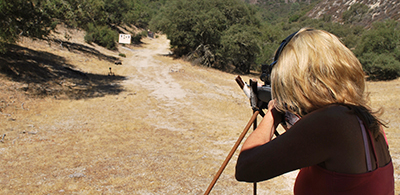
Just understand that these are big steps. Ideally, it’s best to take them slowly. Move from a .22 rimfire to a .22 center-fire, then to a .243 Win., then to a mild 6.5 mm, 7 mm or .270 Win.—and then to a fast .30-caliber and beyond. Okay, that’s the ideal, but not all of us have access to enough different rifles to take it in baby steps. Understood. But also understand that you will not go from proficiency with a deer rifle to proficiency with a .375 or .416 in one range session. And you’ll hurt yourself if you try. If you are approaching an unfamiliar level of recoil, then you don’t know how your body and mind are going to deal with it—but for sure you will be better off taking it in small doses. Three or four shots are probably the most you should fire the first time around. It may take several range sessions before you are comfortable firing 10 or 12 shots at a sitting, and maybe you should never go beyond that.
Use The .22
This doesn’t mean your precious trips to the range have to be wasted. Shooting is shooting, and range time is learning time, but you aren’t learning diddly when you’re gritting your teeth and getting kicked into next week. So shoot with whatever mild(er) center-fires you have and fire just a few shots with the bigger rifle you’re learning to shoot. In between, do plenty of shooting with a .22. There’s hardly any recoil, little noise and, best of all, minimal cost. Use your .22 from various positions, focus on getting steady and concentrating on the basics of breathing, sight alignment and trigger squeeze. These essentials remain the same with the big gun, but they’re a whole lot easier to concentrate on when you’re not anticipating recoil. In the Marines we called it the BRASS rule: Breathe, Relax, Aim, check Sight alignment, trigger Squeeze. It’s the same for every shot, whether from a .17 HMR or a .50 BMG, and it’s easier to remember if you intersperse shots that have heavy recoil with numerous shots from lighter-recoiling guns.
By the way, and we’ll hope this doesn’t happen, if you’ve gone too far and find that you’ve developed a flinch, the only cure I know of is to go back to the basics. A flinch is essentially an involuntary block. Your mind tells you that you must press the trigger, but your body, anticipating recoil, refuses to cooperate. It has many manifestations, and none of them are good. Most common: When you finally get the trigger to go, it’s a violent jerk that throws the bullet wild. This is not endemic only to rifle shooters; I’ve seen veteran trapshooters develop a flinch so profound that they run halfway to the trap house trying to get their finger to activate the trigger. In competitive shotgunning a common cure is a “release” trigger, one that is set by pulling, then fires when released. In rifle shooting the only real cure is to go back to the basics and start over with a .22 or airgun. Clearly it is better to avoid this malady. You can do so by building up gradually, taking your time and burning lots of .22 ammo in between shooting the bigger center-fires.
Be A Wimp
Recognize your limit, and don’t exceed it! This is not about being a sissy; it’s about preserving shooting skills that have been years in the making. It is absolutely true that shooting on the range is far worse than in the field. You have little adrenaline flowing, and range positions (especially, the bench) tend to accentuate recoil. Pad yourself up—before you get kicked, not after you’ve felt the full effects. I always have a PAST Recoil Shield in my shooting kit. I use it religiously on the range for shooting above .30-caliber, and I make sure Donna and my daughters use it at lower levels. A folded-up towel works almost as well.

Yes, it’s absolutely true that extra shoulder padding will change the proper length of pull, but that is not as important as avoiding painful recoil. You can conduct effective practice with a .22, and you can conduct dry-fire practice with the big gun on the range or at home. On the range there is no reason to withstand more recoil than you are comfortable with.
The bench is absolutely essential for determining raw accuracy, checking loads and establishing zero, but it is very bad for recoil. Your body simply has nowhere to go. Maybe a good prone position is worse, but the bench is very bad. You should pad yourself well when shooting a heavy gun off the bench. I go a step farther: I use a Caldwell Lead Sled, a truly clever device that essentially harnesses the rifle in a weighted rest. With 20 lbs. of lead on the sled you are effectively adding 20 lbs. of gun weight, and the most violent beast becomes a tame pussycat.
Get Off The Bench
While the bench is a necessary evil, if you’re shooting big guns you should use it as little as possible. Note that “big gun” is a subjective description, but if we’re talking about a hunting rifle, the bench is of limited utility because there are no benches in the field. If we’re talking about a long-range rifle, whether a .300 Win. Mag. or .338 Lapua Mag., prone is a useful position, but recoil is accentuated. It is somewhat mitigated by grounding a bipod. You can practice sitting, kneeling and offhand; and in all positions, resting over a pack, sticks or solid natural rest. Almost anything is better for recoil than the benchrest. If we’re talking serious big bores—dangerous-game rifles—we do most of our practice shooting offhand or from sticks. These are the most likely positions from which a large-caliber rifle will be employed, and also positions that allow the body to “give” the most. Make sure you hold the rifle tightly against your shoulder with your cheek firmly mated to comb—you do not want to give recoil a “running start.”
Reduce Recoil
To start with gun fit, a stock that doesn’t fit you is going to kick you and inflict pain. The length of pull needs to be right, and when the cheek is mated to the comb the sight picture should be right. If you have to lift your face or scrunch it into the stock to get a proper sight picture, then the gun is going to kick you. Then comes a good, thick rubber or, better, modern shock-absorbing polymer recoil pad—don’t kid yourself that it doesn’t make a difference. A quality recoil pad also has the advantage of anchoring the butt firmly against the shoulder.

Next comes gun weight. Unfortunately you have to carry that weight, but gun weight is the cheapest and simplest way to reduce recoil with limited side effects. These days, rifles are getting lighter and lighter, and it is amazing how much that can accentuate recoil. Just yesterday I was shooting a Kimber Adirondack in 7 mm-08 Rem., a lovely rifle weighing under 5 lbs. without a scope. It was manageable, but I was shocked at how much the mild little 7 mm-08 Rem. cartridge could kick! The equation is so simple: Double gun weight and cut recoil in half. So an 8-lb. 7 mm-08 will kick half as much as a 4-lb. 7mm-08. Neither will hurt you. But a 6-lb. .375 can hurt, so raising its weight to 9 lbs. will make it far more manageable. If a gun is too light, weight can sometimes be added by inletting lead into the butt and barrel channel—just try to do it evenly so you don’t mess up the balance. Mercury recoil reducers, such as the Break-O, both add weight (they’re heavy) and reduce recoil through a piston effect—they help a lot.
Muzzle brakes offer a very sound option, but muzzle blast is a serious issue. This is especially true when hunting dangerous game because you are almost never alone. When an animal is sighted, Tracker A fades to the left, Tracker B fades to the right, the guide—in Africa called the professional hunter, or PH—sets up the shooting sticks and puts up his binoculars … and when you step forward and take the shot you blow out all their eardrums. Some African PHs won’t allow muzzle brakes in camp, others deal with it and roll their eyes. The compromise is a removable brake with a thread protector. Practice with the incredible benefit of a good muzzle brake, but pad yourself up and remove it for one last sight-in session, and don’t use it in the field. After all, you’ll be excited, and you’ll never feel the 40 percent increase in recoil.
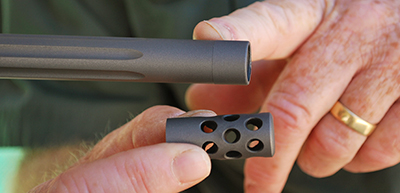
Know Your Limits
I used to think I was impervious to recoil. I’ve shot big guns a lot, and despite injuries, I’ve never gotten flinchy. But, as Dirty Harry Callahan told us, “a man’s got to know his limitations.” The year after that .600 incident I thought I was pretty well healed-up, and I was fortunate to borrow Fletcher Jamieson’s famous .500 Jeffery to go in on a buffalo. That’s a monstrous cartridge—a 570-gr. bullet at high velocity—even more powerful than the mighty .505 Gibbs. The buffalo dropped like a rock, so fast that PH Craigh Hamman and I thought I must have shot high and hit or creased the spine. So I shot again, no movement—the buffalo was stoned. And good thing, too. As we moved forward I realized that my left arm was numb from shoulder to wrist, and I couldn’t have fired another shot if my life depended on it. I had exceeded my limit.
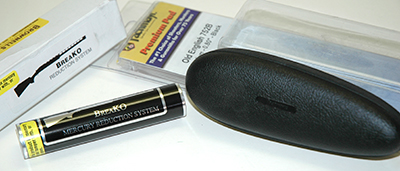
Always keep in mind that there are two figures associated with recoil: Recoil energy and recoil velocity. A high-velocity cartridge hits you faster, and the lighter the rifle the faster (and harder) it hits you. A low-velocity cartridge hits you slower, and you can reduce both recoil velocity and energy with gun weight. Most people can learn to shoot a .375 of adequate weight (9 lbs. minimum or, better yet, 10 lbs.). A lighter, faster .300 will kick much the same, though faster. Many people can learn to shoot a .416. Fewer people can learn to shoot a .458 Lott, and relatively few can exceed that with consistent accuracy. The .375 is legal for all dangerous game in the world, and with the great bullets we have today it is more adequate now than a century ago when it was first judged adequate. Bigger yields more instant gratification—if shot placement is equally good. But all guides and professional hunters throughout the world will tell you that it is better to place a shot well with a smaller caliber than to place it poorly with a big gun. So practice smart, learn well and stay within your limits, whatever they happen to be.
Don't Cram For The Exam
The most important takeaway is that moving to a new level of recoil is not an overnight process, and it doesn’t matter how experienced you are, because if you haven’t approached it (or broached it), you don’t know what your recoil limit is. There are numerous reasons why you might wish to move to a cartridge that has a new and unfamiliar level of recoil: Longer range, lighter rifle, larger game or just because you want to. Plan ahead and take it slowly. You may find it’s no problem, or you may find it’s wiser to back off. But be sure to back off before you go too far!














